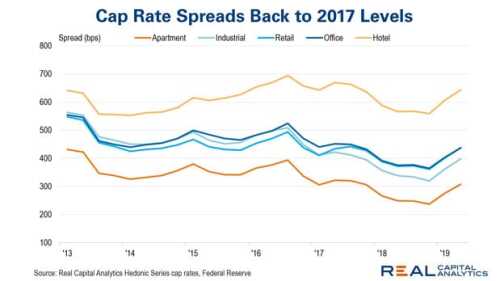Real Estate Trends
A new report from the ULI Greenprint Center for Building Performance shows that the real estate industry has made significant progress over the past 10 years in reducing carbon emissions and energy consumption while increasing asset value. Volume 10 of the Greenprint Performance Report™, which measures and tracks the performance of 8,916 properties owned by Greenprint’s members, demonstrates a 10-year improvement of 17 percent in energy use intensity, which is the annual energy consumption divided by gross floor area. The report also finds that Greenprint members are still on track to reduce carbon emissions by 50 percent by 2030.
Best Bets for Real Estate Investment and Development in 2020 to Be Highlighted at ULI’s Fall Meeting
The best bets for real estate investment and development—including markets and industry sectors—for next year will be highlighted at the 2019 ULI Fall Meeting, set for September 18–21 at the Walter E. Washington Convention Center in Washington, D.C. These predictions and other observations on industry trends are included in the 2020 Americas edition of Emerging Trends in Real Estate ®, the highly anticipated real estate forecast copublished each year by ULI and PwC.
Interest rates have been on a roller-coaster ride over the last year, but cap rates are largely unchanged. The result of these moves is that cap rate spreads relative to the safe investments in the 10-year U.S. Treasury bonds have moved back to the levels seen in 2017. Given everything that has changed over the last year—as well as everything that has not—there may be room for cap rate spreads to move lower.
Owen D. Thomas, chief executive officer of Boston Properties, has been elected as the new ULI global chairman. In his two-year tenure, Thomas will guide the Institute’s delivery of member value and mission-oriented work.
Reflections on a storied, globe-spanning career—and thoughts on today’s Hong Kong.
Homeownership is still the American dream, but the home Americans are dreaming about does not look like yesterday’s traditional house with its formal living and dining rooms, large yard, and price that is out of reach for many people. A panel of industry experts addressed the U.S. shortage of housing during the ULI Spring Meeting, prompted by a new report, Attainable Housing: Challenges, Perceptions, and Solutions, from ULI’s Terwilliger Center for Housing and RCLCO.
Each year, the U.S. Environmental Protection Agency Energy Star program honors businesses and organizations that have made outstanding contributions to protecting the environment through superior energy achievements. Energy Star Award Winners lead their industries in the production and sale of energy-efficient products and services, and in the development and adoption of strategies that provide substantial savings in the buildings where people work and live. This year, five ULI Greenprint members achieved Energy Star Partner of the Year.
Nashville’s new boutique hotels capitalize on a sometimes bawdy history, art and artifacts—and even a fictional persona.
Lizanne Galbreath, who serves as managing director of Galbreath & Company, spoke recently at a ULI leadership event in Columbus. Her grandfather, John W. Galbreath, founded the John W. Galbreath Company in 1921, which eventually became one of the largest development companies in the United States, and was also a founding member of ULI.
A diverse group of experts presented a stark analysis of the rollout of federal Opportunity Zones during the recent ULI Housing Opportunity 2019 conference in Newport Beach, California. More than a year after the program was established, there is still confusion over regulations and implementation, they said.








